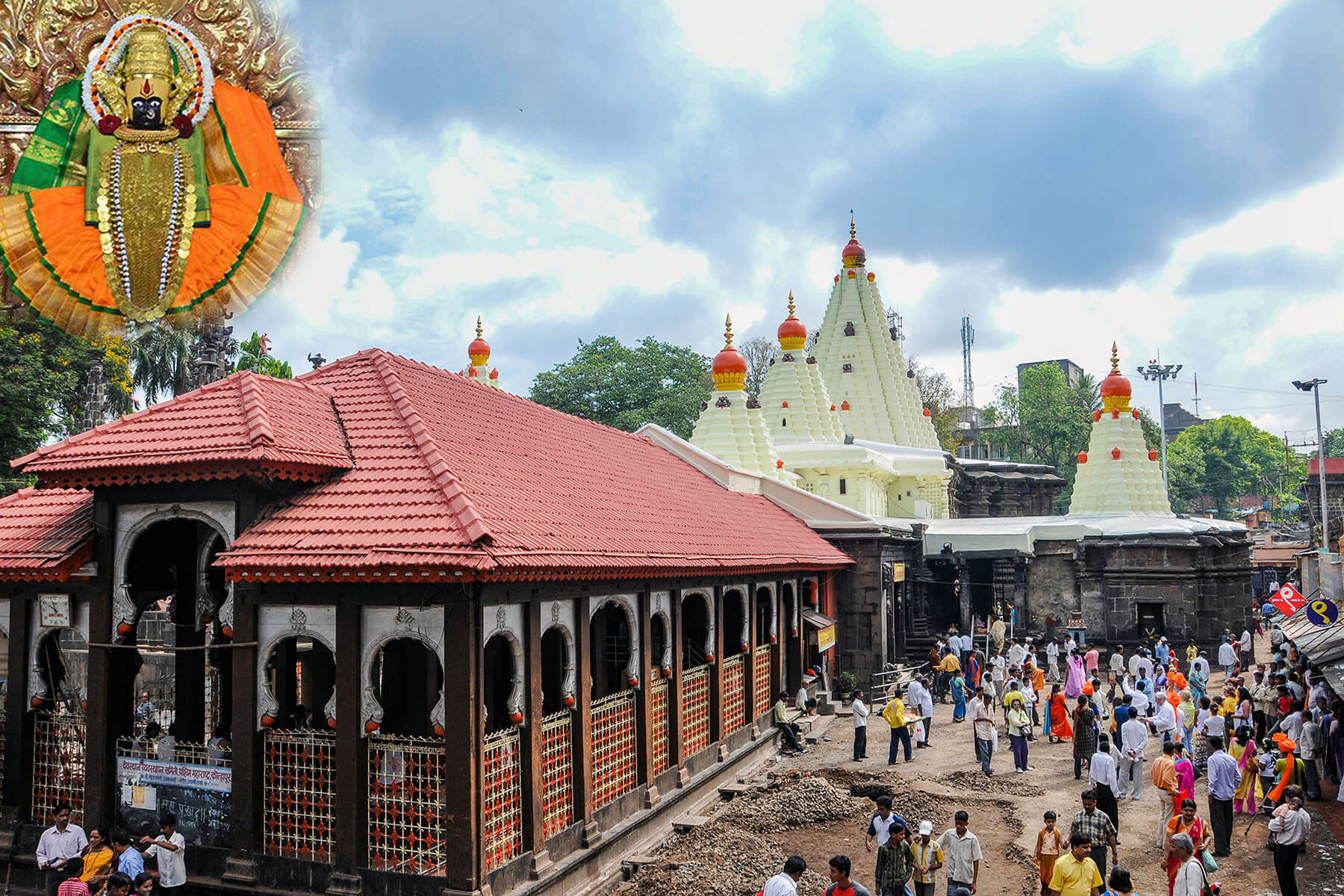Devichi Sadeteen Shaktipithe in Maharashtra, India: A Sacred Journey
Maharashtra, a state rich in cultural heritage, is also home to several prominent religious sites that attract devotees from across the country. Among these sacred places are the Shaktipeeths, ancient temples dedicated to Goddess Shakti. These are believed to be seats of immense divine power, and Maharashtra is blessed with the presence of Devichi Sadeteen Shaktipithe, or the Three and a Half Shaktipeeths, that hold a special place in the hearts of devotees. These revered sites are believed to be imbued with spiritual energy, offering solace, strength, and blessings to the faithful.
The Legend of Shaktipeeths
The Shaktipeeths are connected to the mythological tale of Goddess Sati, the consort of Lord Shiva. According to the Puranas, Sati, unable to bear the insult to her husband by her father, Daksha, immolated herself in a sacrificial fire. In his immense grief and rage, Lord Shiva carried her lifeless body across the universe. To calm him, Lord Vishnu used his Sudarshan Chakra to cut her body into 51 pieces, which fell at various places on earth. These places came to be known as Shaktipeeths, sacred sites dedicated to the different forms of Goddess Shakti.
In Maharashtra, there are three and a half such Shaktipeeths (Sadeteen), where the presence of the divine feminine power is strongly felt. They include:
- Mahur (Renuka Devi)
- Tuljapur (Tulja Bhavani)
- Kolhapur (Mahalakshmi)
- Vani (Saptashrungi Nivasini) – counted as the “half” Shaktipeeth.
Each of these temples is not only a significant religious site but also steeped in mythology and historical importance.
1. Mahur – Renuka Devi Shaktipeeth
The temple of Renuka Devi at Mahur, situated in Nanded district, is considered the foremost of Maharashtra’s Shaktipeeths. Renuka Devi, the mother of Lord Parshuram, is worshipped here as a symbol of maternal care and divine power. The temple is perched atop a hill, offering devotees a scenic view of the surrounding landscape. Mahur is also associated with the Mahur fort, making it a place of historical significance.
Every year, during the Navratri festival, thousands of devotees flock to the temple to seek the blessings of the Goddess. The temple’s serene location amidst natural beauty adds to the spiritual experience, and pilgrims believe that Renuka Devi grants peace, prosperity, and protection to her worshippers.
2. Tuljapur – Tulja Bhavani Shaktipeeth
The Tulja Bhavani temple in Osmanabad district is one of the most revered Shakti temples in Maharashtra. Goddess Tulja Bhavani is considered the family deity (Kuldaivat) of many Marathi families, including the Maratha warrior king, Chhatrapati Shivaji Maharaj. According to legend, Shivaji sought the blessings of Tulja Bhavani before embarking on his military campaigns, and it is believed that the goddess gifted him a sword, known as the Bhavani Talwar.
The temple is situated on the Yamunachala Hill, and its architecture reflects the grandeur of the Maratha era. The image of the goddess, made of black stone, is adorned with ornaments and depicts her in a warrior stance, symbolizing her role as the protector of her devotees. Navratri is the most important festival celebrated at the temple, attracting millions of visitors.
3. Kolhapur – Mahalakshmi Shaktipeeth
The temple of Mahalakshmi, also known as Ambabai, is located in Kolhapur and is one of the most important pilgrimage sites in the region. Goddess Mahalakshmi is considered to be the consort of Lord Vishnu, and the temple holds immense significance for Vaishnavites as well. The temple’s architecture is a blend of ancient Hemadpanthi style, characterized by its stone construction and intricate carvings.
According to legend, Mahalakshmi settled in Kolhapur to vanquish the demon Kolhasur, and since then, she has been worshipped as the goddess of prosperity and well-being. It is believed that visiting the Mahalakshmi temple in Kolhapur can fulfill all wishes and bring happiness into the lives of devotees. The annual Kirnotsav festival, where the rays of the sun directly fall on the deity, is a spectacular event that draws pilgrims from all over India.
4. Vani – Saptashrungi Nivasini (Half Shaktipeeth)
The Saptashrungi Devi temple, located in Vani near Nashik, is considered the “half” Shaktipeeth in Maharashtra. Nestled amidst seven hills (Saptashrung), the temple offers a breathtaking view of the surrounding valleys. The goddess is believed to be self-manifested (Swayambhu), and she is depicted as a powerful deity with 18 arms, holding various weapons.
The climb to the temple involves around 500 steps, and the journey itself is seen as a spiritual experience. The temple holds great importance in the lives of devotees who seek the goddess’s blessings for protection and health. The annual Navratri festival is a grand celebration here, and the temple remains a vital part of the spiritual landscape of Maharashtra.
Conclusion
The Devichi Sadeteen Shaktipithe in Maharashtra are not just places of worship but are also spiritual centers that have been revered for centuries. Each Shaktipeeth has a unique story, legend, and form of worship, offering devotees an opportunity to connect with the divine feminine energy in its different manifestations. A visit to these temples is considered a sacred pilgrimage, where the journey itself is filled with devotion, reverence, and spiritual fulfillment. Whether it’s the maternal warmth of Renuka Devi, the warrior strength of Tulja Bhavani, the prosperity of Mahalakshmi, or the protective grace of Saptashrungi Nivasini, each Shaktipeeth offers a distinct aspect of the Goddess, reminding us of the power and presence of Shakti in our lives.



